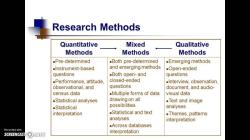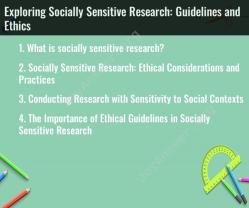How to write a content analysis paper?
Writing a comprehensive content analysis paper involves systematically analyzing and interpreting a body of textual, visual, or audiovisual content to draw meaningful conclusions about patterns, themes, and trends within that content. Here is a step-by-step guide on how to write a content analysis paper:
1. Define Your Research Question:
- Start by clearly defining your research question or objective. What specific aspect of the content are you analyzing, and what do you want to understand or reveal through your analysis?
2. Select Your Content:
- Identify the source material you will analyze. This could be textual documents, images, videos, audio recordings, social media posts, or any other type of content. Ensure that your content is relevant to your research question.
3. Data Collection:
- Collect the content data systematically. If you are analyzing textual documents, you might collect articles, books, or reports. For visual content, you may gather images or videos. Ensure that your data collection process is organized and well-documented.
4. Coding Scheme Development:
- Create a coding scheme or set of categories and codes that you will use to analyze the content. The coding scheme should align with your research question and help you categorize and interpret the data.
5. Data Coding:
- Apply the coding scheme to your content data. For each piece of content, assign relevant codes based on the categories you've established. This process is often iterative, and you may need to refine your coding scheme as you proceed.
6. Data Analysis:
- Analyze the coded data systematically. Look for patterns, themes, and trends within the content. Use software tools if available (e.g., NVivo or ATLAS.ti) to assist in managing and analyzing large datasets.
7. Qualitative Interpretation:
- Provide qualitative interpretations of the patterns and themes you have identified. Explain the significance of your findings and how they relate to your research question.
8. Quantitative Analysis (if applicable):
- If your content analysis includes quantitative elements, such as frequency counts, statistical analyses, or comparisons, present these results clearly and concisely.
9. Visual Aids:
- Use tables, charts, graphs, or visual aids to illustrate key findings or patterns. Visual representations can enhance the clarity of your analysis.
10. Discussion:
- Interpret the implications of your findings. Discuss how your results relate to existing literature or theories in the field. Address the limitations of your analysis and potential sources of bias.
11. Conclusion:
- Summarize the main findings and their significance. Restate the research question and how your analysis contributes to the understanding of the topic.
12. References:
- Cite all the sources you have referenced in your content analysis paper using a consistent citation style (e.g., APA, MLA, Chicago).
13. Appendices (if needed):
- Include any supplementary material, such as the full coding scheme, examples of coded content, or additional data, in appendices.
14. Proofread and Edit:
- Carefully proofread your paper for grammar, spelling, and clarity. Ensure that your paper is well-organized and follows the appropriate formatting and style guidelines.
15. Peer Review (optional):
- Consider having your content analysis paper reviewed by peers or colleagues for feedback and suggestions for improvement.
16. Submission:
- Submit your content analysis paper to the appropriate venue, whether it's an academic journal, conference, or other publication outlet.
Remember that the structure and format of a content analysis paper may vary depending on your field of study and the specific requirements of the venue where you intend to publish or present your research. Be sure to follow the guidelines provided by that venue or consult with your instructor or advisor for additional guidance.












